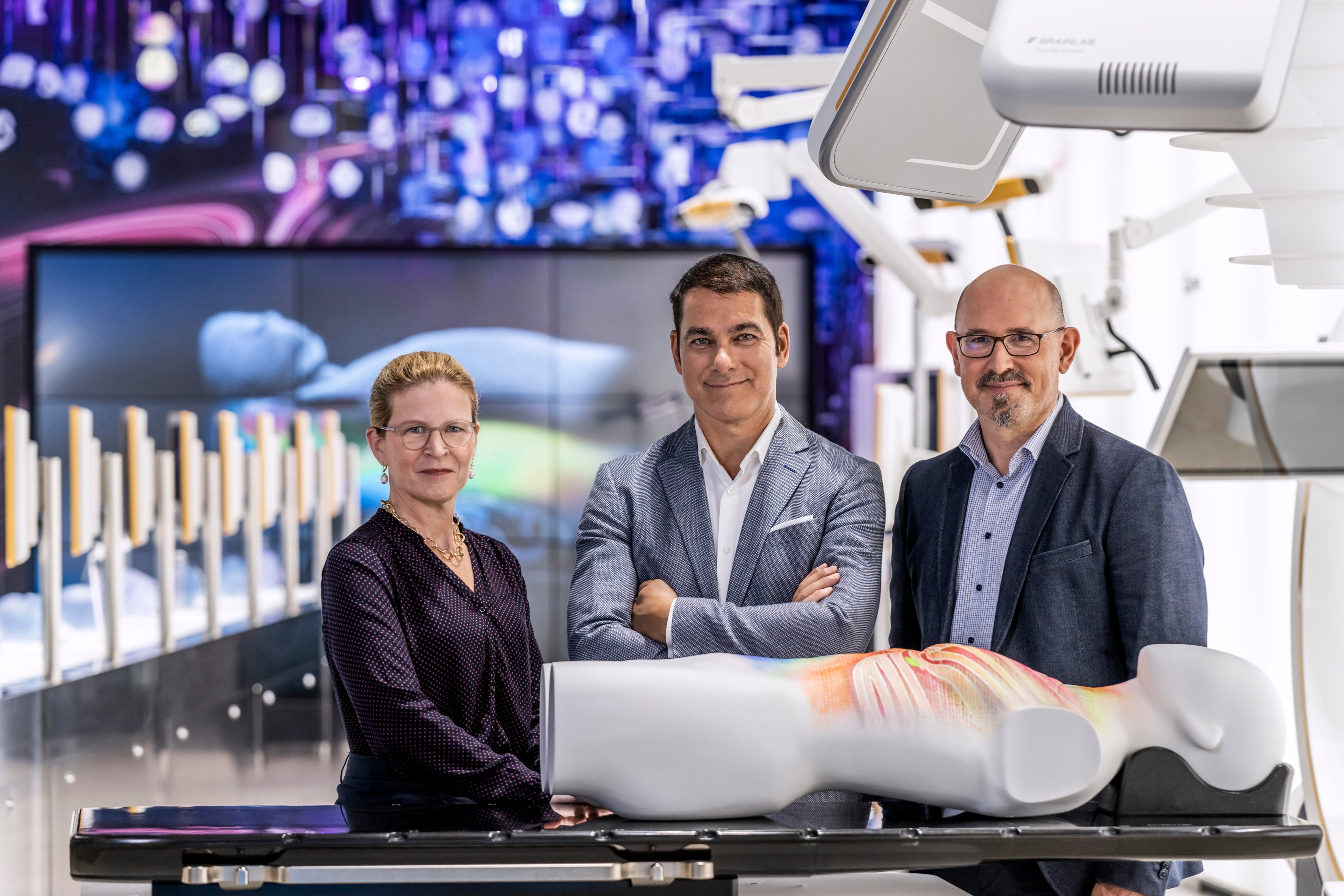Stefan Vilsmeier, Claus Promberger and Professor Cordula Petersen, MD were one of the three teams nominated for the Federal President’s Award for Innovation and Technology 2022 for their work on ExacTrac Dynamic® technology.


Stefan Vilsmeier
President and CEO, Brainlab

Prof. Cordula Petersen, MD
Clinic Director of the Clinic for Radiotherapy and Radiation Oncology at the University Medical Center Hamburg-Eppendorf (UKE) and President of the German Society of Radiation Oncology (DEGRO)

Claus Promberger
Vice President R&D, Brainlab
Since founding Brainlab in 1989, Stefan Vilsmeier has been President and CEO of the company, which is now a leader in the field of software-based medical technology. He has received several awards for his entrepreneurial and visionary achievements in medical technology and is named as an inventor of 81 patent families.
What drives him: Making medical technology and knowledge more impactful and accessible to physicians and their patients.
Since 2010, Prof. Cordula Petersen, MD has been the Clinic Director of the Clinic for Radiotherapy and Radiation Oncology at the University Medical Center Hamburg-Eppendorf (UKE). She was one of the first to use ExacTrac technology in daily clinical practice for radiation oncology at the UKE. She also regularly provided feedback on the practical implementation of the product and treatment concepts for stereotactic radiosurgery and radiotherapy.
Through her work with the German Society of Radiation Oncology (DEGRO), Professor Petersen also gathered valuable insights for the development of ExacTrac Dynamic.
Claus Promberger started his first job as a software engineer for radiosurgery planning software at Brainlab in 1996, directly after completing his studies in Information Systems at the Technical University of Munich.
He launched the first prototype of the ExacTrac positioning system in 1998 as lead developer and is named as the inventor of five patent families in the field of radiosurgical planning, procedure and motion management.
Our Technology
ExacTrac Dynamic
From diagnosis to treatment – learn more about patient positioning with state-of-the-art imaging technology in this video
Lung cancer is the leading cause of cancer death worldwide, claiming around 45,000 lives per year in Germany alone.
Oftentimes, lung cancer is not diagnosed until the disease has reached a more advanced stage because lung cancer symptoms can take longer to manifest and detect. Patients move during irradiation and, due to respiration, the tumor can also move irregularly. Until now, a safety area around the tumor — referred to as the motion envelope — has been irradiated along with the tumor. The motion envelope encompasses the entire space in which the tumor moves during respiration. However, this approach can result in the destruction of healthy lung tissue, which ultimately can impair function and quality of life.
In addition, 2D X-Rays may not always be able to detect small and often treatable tumors. If these small lung tumors could be detected and treated in an early stage of disease progression, the patient’s chances of survival may increase.
Present and future of radiotherapy treatment
ExacTrac Dynamic was developed to address these challenges and limitations. With this technology, patients with different tumor types can be positioned with submillimetric precision during irradiation.
As a result, it is now possible to effectively destroy tumor tissue while sparing healthy tissue.
The potential of the technology is enormous—currently, ExacTrac Dynamic enables medical professionals to achieve high precision, submillimetric radiotherapy positioning for breast, brain, spine and prostate cancer patients. This supports the significantly more precise delivery of radiation therapy in fewer sessions than conventional radiation treatment and contributes to better quality of life for patients.
ExacTrac Dynamic is in the process of being modified so that in the future, it will be able to precisely target other types of solid tumors, including small, moving lung tumors.
For the development of this groundbreaking approach in lung cancer, Stefan Vilsmeier and Claus Promberger are in close collaboration with Prof. Cordula Petersen, whose clinical insights were incorporated into the project.

Nomination Press Release
More information about the nomination for the Federal President’s Award for Innovation and Technology is included in our press release
Press & Media
More information for members of the press is available on the Brainlab Press & Media page

